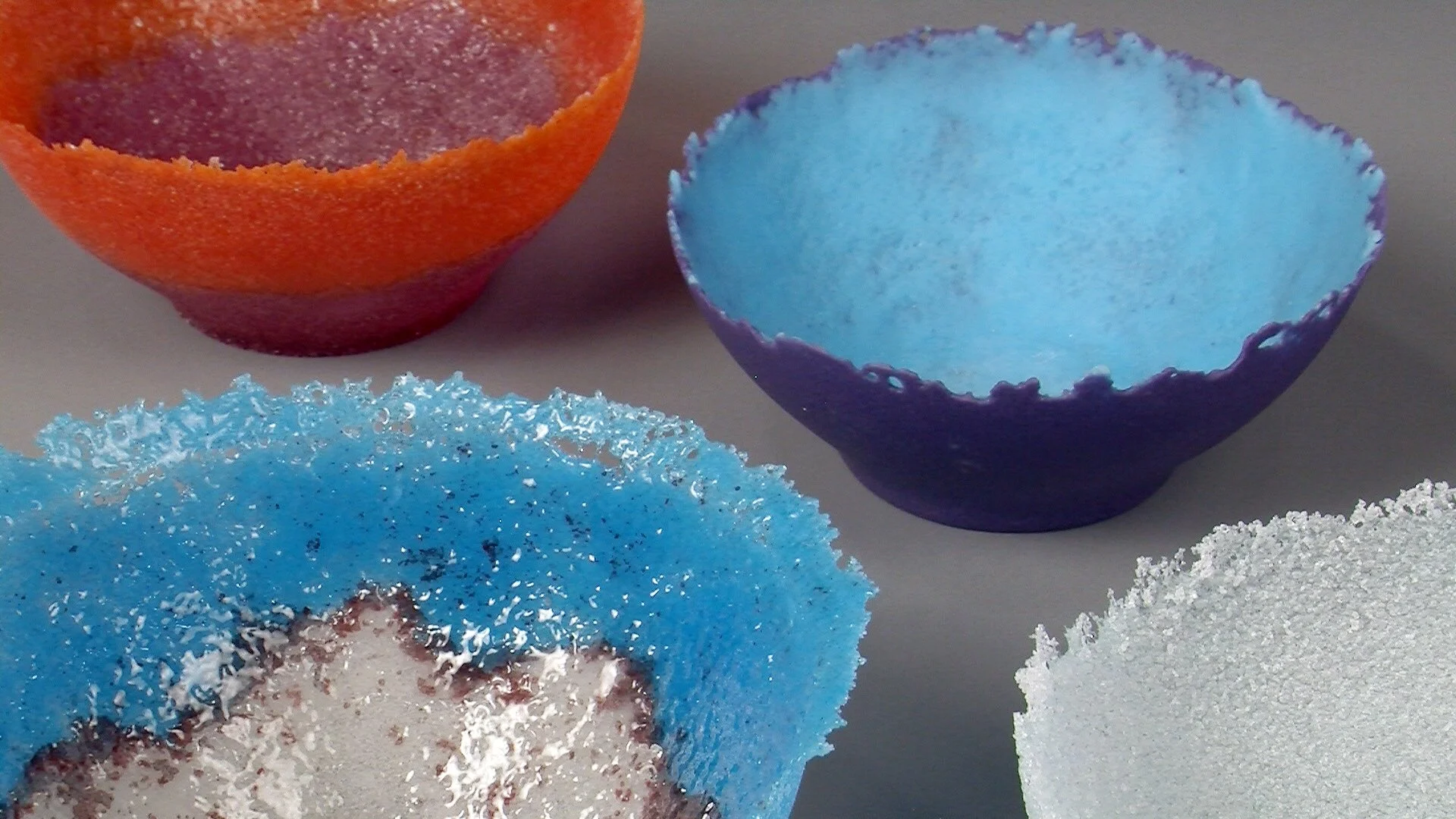Pâte-de-Verre
Stones That Flow – Ancient Glass, Modern Magic
Discover pâte-de-verre, an ancient glass fusing technique reimagined for today! In this hands-on workshop, you'll create your own unique glass objects using molds, textures, and drawings. Learn how to fuse crushed glass into sculptural forms with opalescent, stone-like beauty.
This is a 4-hour workshop split into two sessions: 3 hours of making and 1 hour of finishing. No experience needed—just curiosity and creativity. Join us and bring “stones that flow” to life!
"Stones That Flow" — Reimagining an Ancient Glass Technique
Discover the ancient art of pâte-de-verre—a glass fusing method that dates back to the second millennium BC and is now being reinterpreted in a modern context. In this hands-on course, you'll explore this historic technique to create your own unique glass objects, using an approach that blends drawing, texture, and printmaking.
Working with a variety of mold-making materials, you'll learn how to transfer images, writing, and textures onto glass. We'll treat the process much like a form of printing, using both flat and hollow molds made from plaster and molochite. Into these molds, you’ll pack glass frits and powders—either dry or as a paste—and then fire them in a kiln at around 700°C.
Historically used for jewelry and sculptural inlays in ancient Egypt and Rome, pâte-de-verre—French for “glass paste”—was largely forgotten until it was revived in late 19th-century France, gaining popularity during the Art Nouveau era. Known in ancient Egypt as “stones that flow,” the resulting glass has a distinctive opalescent appearance and can resemble materials like stone, ice, sugar, or fabric.
Today, pâte-de-verre is enjoying a vibrant resurgence in the contemporary art and craft scene. This course offers an accessible introduction to the technique, including basic kiln-firing principles and mold-making methods. You’ll experiment with imprinting textures from objects into clay, and carving directly into plaster/molochite molds using both traditional and experimental tools.
By the end of the course, you'll have the skills to transform your impressions, marks, and drawings into delicate, sculptural glass pieces—each one a unique fusion of history, material, and imagination.



